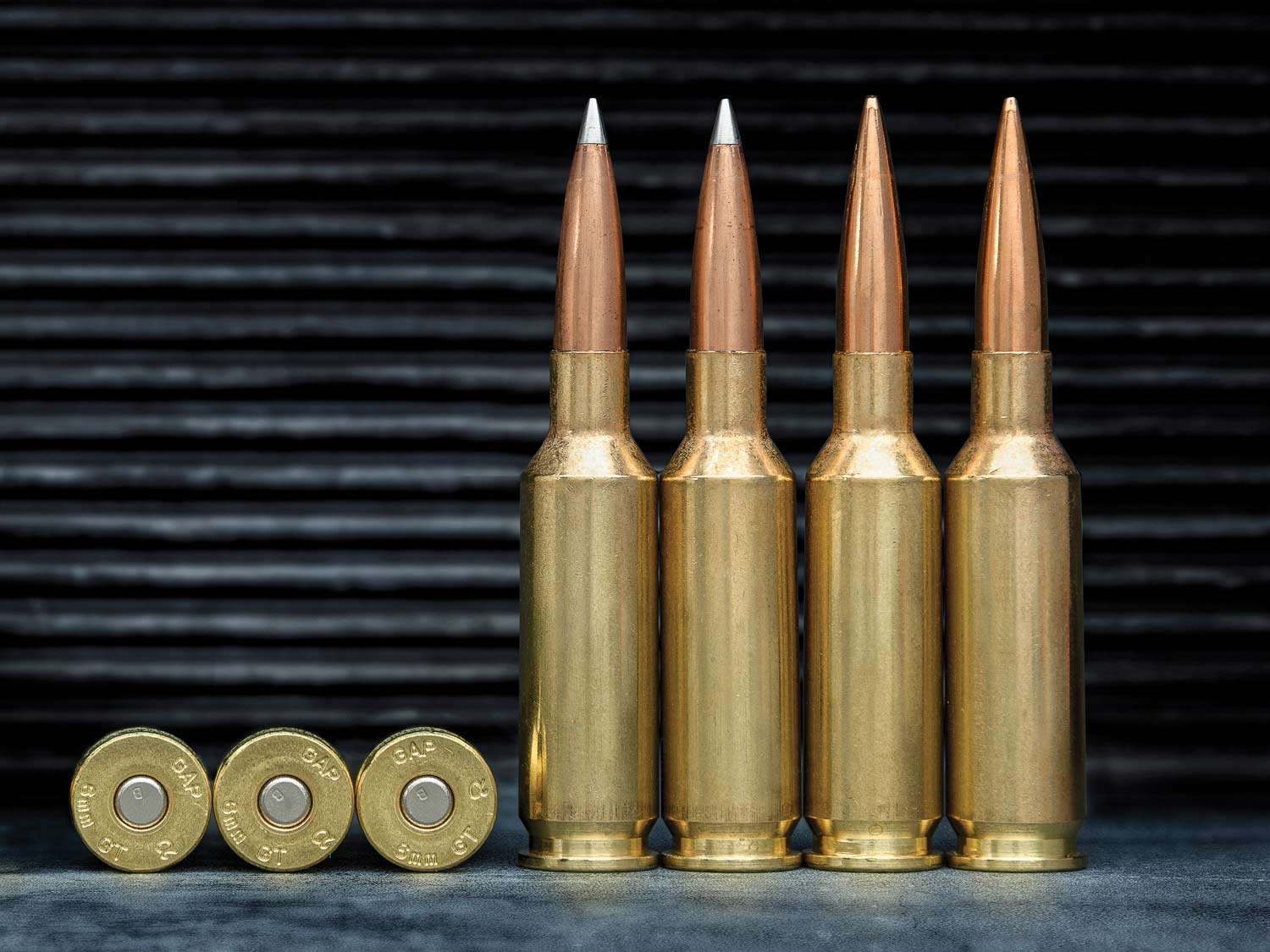We may earn revenue from the products available on this page and participate in affiliate programs. Learn More ›
I feel bad for new cartridges. By and large, they are greeted with the same warmth that a guy in tennis whites gets when entering a biker bar. You can practically hear the record player needle skid across the vinyl whenever another whiz-bang round is announced.
While this reflexive hostility can be a bit excessive—just post “I love the 6.5 Creedmoor” on social media to ignite a virtual bonfire of rage—I understand the skepticism.
Filter out the hot emotion, and you’re left with a valid question: What actual purpose does a new round serve?
In the case of the GAP 6mm GT, the goal is to strike a balance between the precision rifle cartridges that bracket it and address their shortcomings.
On the one side is the larger 6mm Creedmoor; on the other are the 6mm Benchrest variants and their kin that have become the darlings of the moment among PRS and NRL shooters. These include the 6 BR, 6 BRX, 6 BRA, 6 BRDX, 6 XC, 6 Dasher, and a couple of others I’m probably forgetting about.
This might seem like much ado about nothing. Who cares if the 6 GT threads the needle between these cartridges? For most shooters, that’s a valid observation. But in the hyper-competitive precision rifle world, any new round that promises—and can deliver—a quantifiable competitive edge deserves a closer look. Even for those hunters and shooters who don’t follow precision rifle trends, the end result might be a versatile, general-purpose round for predators, varmints, and smaller big game should any of the major ammunition companies jump on board.
Now, the shortcomings I mentioned with the current crop of cartridges come with an important caveat: All of them are capable of impressive accuracy and, with few exceptions, will shoot better than whoever is behind the trigger.
That said, the precision rifle game is one of details, and it is here that you’ll find flaws with each of these various 6mm rounds.
For a while, the 6 Creedmoor ruled the roost, and it is still a hell of a cartridge, both for competition and hunting. But shooters who have experience with both this round and the 6mm BR—which is one of the most accurate cartridges in existence (bettered only by the 6 PPC and 22 PPC)—found they couldn’t control the Creed’s muzzle velocity the same way they could the 6 BR’s. This is expressed in terms of the extreme spread (ES) of measured velocities of a shot string that’s been chronographed, and the standard deviation (SD) of that data.
Ultrasmall single-digit ESs have become the new quarter-inch group among the keyboard commandos, with shooters posting pictures of their chronograph’s readouts. As such, you should take them with a grain of salt. How many rounds were in that group? How many shots were deleted from the string to get those results? Will those reloads deliver that more than once? You get the picture.
There’s a practical limit to how consistently one can get the 6 Creed to shoot. In my case, loading on a heavily modified Dillon XL 650, the best I could consistently manage were SDs of 9 to 12, with ESs of 25 to 30 fps over 10 shots. I could do better loading on a single-stage press, but because of the need to jam out hundreds of rounds in relatively short order for my matches, a progressive press was the only real option.
I was satisfied with this performance until shooting buddies I trust told me about their results with the 6 BR cartridges. I’ll admit, I was jealous.
The benefit to small ESs and SDs is the waterline. A good waterline means the vertical component of your trajectory stays the same shot after shot. (Bullet wind drift is another matter.) Achieving that, particularly at distances beyond 1,000 yards, requires muzzle velocities with minimal variation from one shot to the next. Even with a flat-shooting 6mm target bullet, a difference of 30 fps in muzzle velocity can translate to 7 inches of vertical at 1,000 yards, turning what might have been a good hit into a clean miss.
So why don’t we all shoot the 6 BRs and be done with it? Well, the short answer is that those cartridges are a pain in the ass. Most don’t have any factory ammo available, and the reloading components are expensive. Some of these wildcats require their brass to be fire- or hydro-formed before use. And the fact that they are all short and stubby—which is part of the reason they shoot well—means many of them won’t feed reliably in detachable-box magazines. During 90-second stages that require anywhere from 8 to 12 shots, any feeding malfunction amounts to a fatal flaw. When that happens in competition (and I’ve been there), it’s enough to make you want to pinwheel your rifle into the bushes.
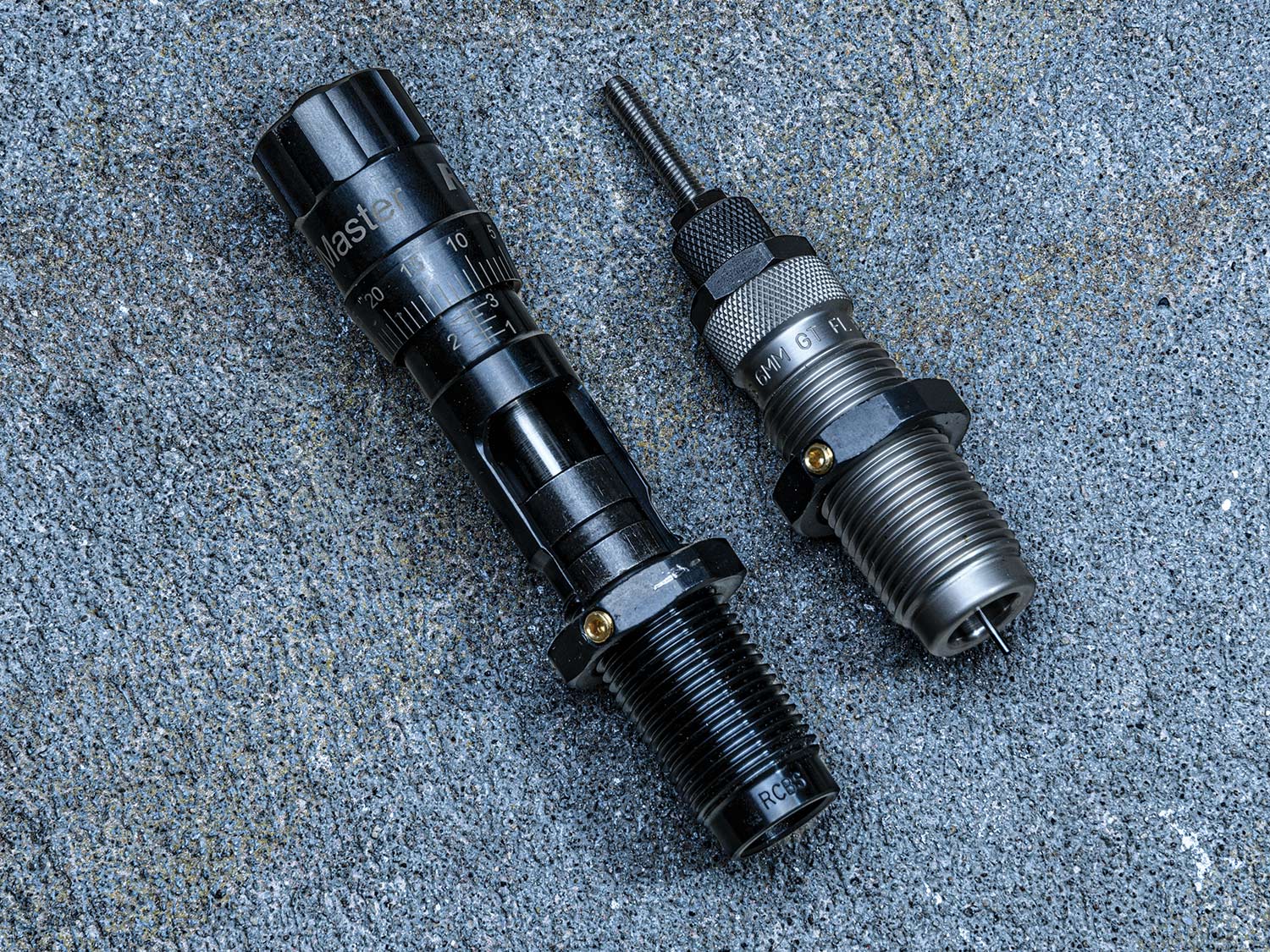
Splitting the Baby
The 6 GT promises the best of both worlds. Abundant brass at affordable prices. Trouble-free feeding in competition rifles. And consistent ESs and SDs that rival those of the 6 BR crowd.
One half of the brains behind the 6 GT is George Gardner, who helped me bring the 6mm Creedmoor to life back in 2010, and who owns GA Precision, which builds outstanding competition and hunting rifles, like the one I had him make me for this story. His partner in this project is Tom Jacobs, a renowned benchrest and long-range shooter who makes Vapor Trail bullets, which are among the most sought-after projectiles in the precision rifle world. Their initials are the GT in the cartridge’s name, which has been dubbed the Glorious Tiger among other colorful nicknames by its fans.
From the base to the shoulder junction, the 6 GT case is .100 inch longer than the Dasher, which is arguably the most popular of the 6 BR cartridges in the PRS world, and it has a 35-degree shoulder versus the Dasher’s 40-degree design. Gardner and Jacobs also increased the neck length by .050 inch compared to the Dasher, making the brass .150 inch longer overall. Those changes might not seem like much, but both are meant to help the 6 GT feed from unmodified .308-size magazines, which is something the 6mm Dasher struggles to do.
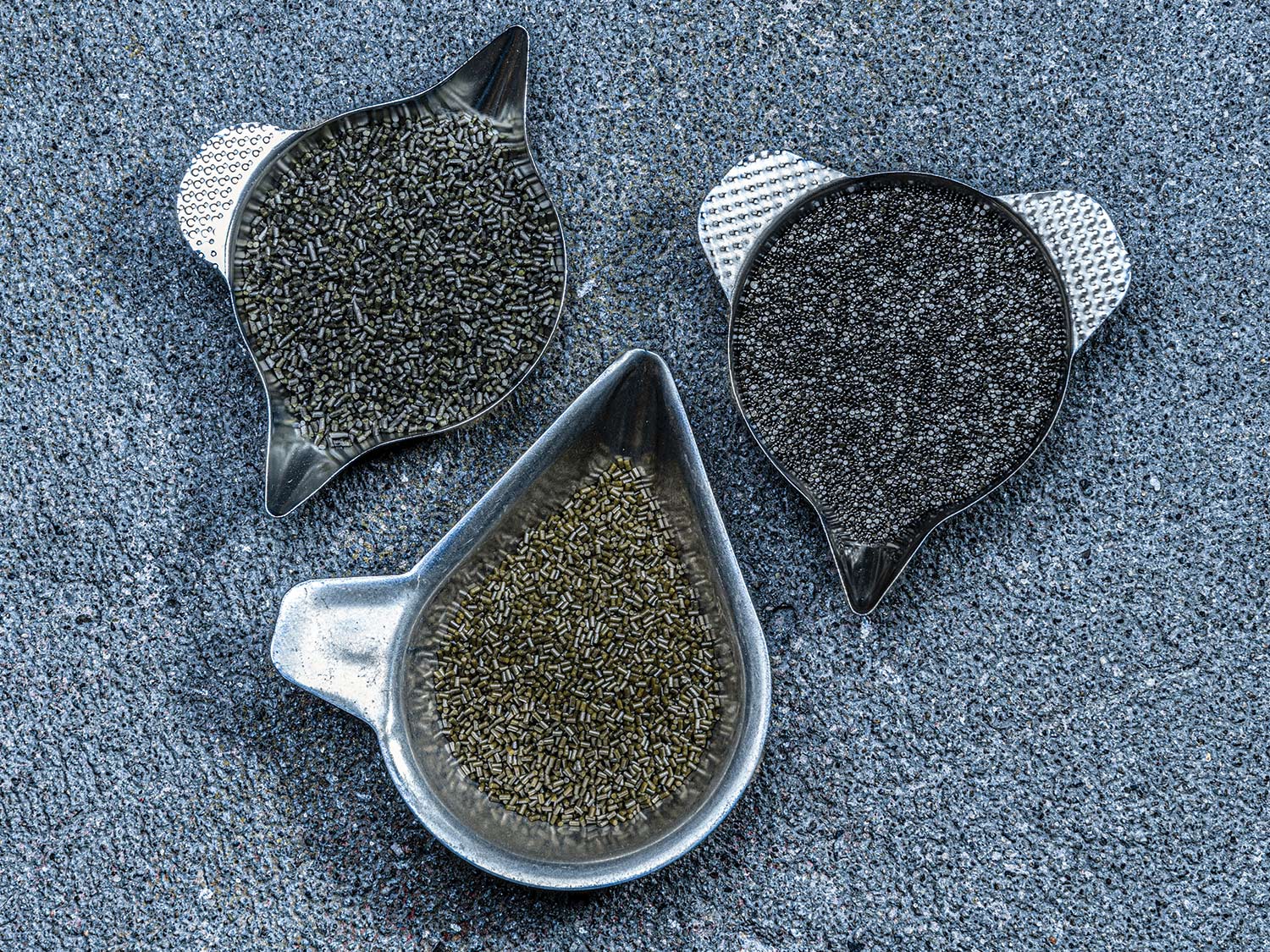
First Shots
With any wildcat, there’s an initial phase where shooters gather and share data about what works and what doesn’t. But it was clear early on that the 6 GT is both exceptionally accurate and pretty forgiving to reload, with good results coming from many combinations of brass, bullets, and powder.
One of the best powders for the Dasher and other 6 BRs is Varget, which is known for its stability and accuracy. Because it is so close in size to the Dasher, the 6 GT is able to run Varget too when shooting heavy 6mm target bullets (105 grains and up), and that’s the powder many early adopters of the 6 GT turned to.
With charge weights from 33 to 34.5 grains, shooters have been getting speeds from 2850 fps to 2975 fps, give or take. Charges that deliver velocities of 2890 fps to 2925 fps seem to fall into a sweet spot for accuracy and consistency.
In my rifle, 33.1 grains of Varget gives me a muzzle velocity of 2875 fps with Hornady 110-grain A-Tips. My SDs are consistently around 5 or so, with ESs over 10 shots of 20 fps or less. At 100 yards, the rifle groups 5 shots from .25 to .35 inch.
That gives the rifle laser-like accuracy on long-range targets. During a team shooting match early in the summer, my partner (who was running a 6 Dasher) and I hammered targets out to 1,300 yards with tremendous confidence in our waterlines, needing to figure out only our wind calls in order to secure hits.
But there’s more than one way to skin a tiger, and as I mentioned, the 6 GT shows great versatility when it comes to mixing and matching reloading components.
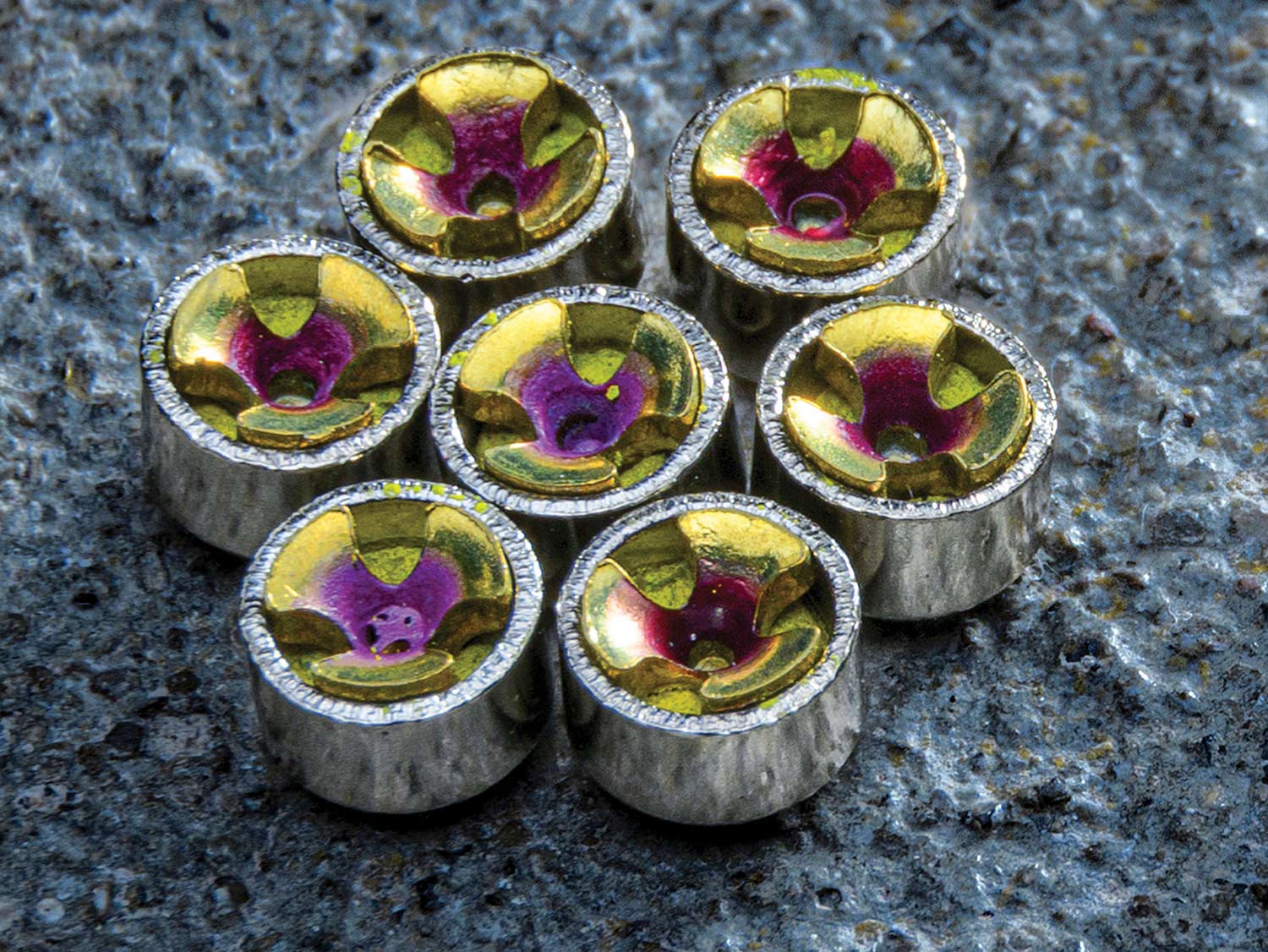
Big Menu
For anyone interested in the 6 GT, there’s brass available from two sources: Hornady and Alpha Munitions. The Hornady brass is very good, and priced at about 75 cents apiece—a bit less if you buy in bulk. The Alpha Munitions brass is exceptional, produced to very tight tolerances, and about $1.15 per piece. Both types of brass use small rifle primers, which is in keeping with the 6 BR cartridges. While the accuracy benefits of large vs. small primers is debatable, a small rifle primer does extend the life of the brass. Because there’s more material in the case head, the smaller primer pockets don’t expand as quickly, meaning the brass can be reloaded more times before it gives up the ghost.
I’ve shot hundreds of rounds of both Hornady and Alpha brass, and while they have been about equally accurate, my ESs and SDs with the Alpha brass have been a bit better. One nice thing I found about the brass is that my charge weights are basically interchangeable between the two brands, with minimal difference in muzzle velocities. Often, one brand of brass will shoot at markedly different velocities than another (meaning they generate different levels of pressure)—which is one of the dozens of reasons that you always work up from a reduced charge when reloading.
Read Next: The Evolution of the 6.5 Creedmoor
When it comes to bullets, there’s a grab bag of great projectiles to choose from. In my testing, I shot the 103-grain Vapor Trails, Berger’s new 109-grain Hybrid, the Berger 105-grain Hybrid, Barnes’ 112-grain Matchburner, the 110-grain A-Tip from Hornady, and Hornady’s 108-grain ELD-M.
All grouped well, but the 103-grain Vapor Trails averaged .312 inch for 5-shot groups using different powders, making it the most accurate of the bullets I’ve tested. The A-Tips were right behind it, with an average group size of .375 inch.
As far as powders are concerned, I did most of my testing with Reloder 16 and Winchester’s new 6.5 Staball, which is a spherical powder that meters very well from volumetric dispensers.
To reduce the number of variables, the only primer I tried was Federal’s 205M, though I know other shooters have been using the CCI 450 and BR4 primers with success.
As a side note, some smaller ammo makers are loading the 6 GT, letting you sidestep the reloading process. Clays Cartridge company is making very good ammo, loading both Berger 105s and the 110 A-Tips. I shot three boxes of the 105s, and not only did it group in bug holes, but the ESs and SDs were fantastic too.
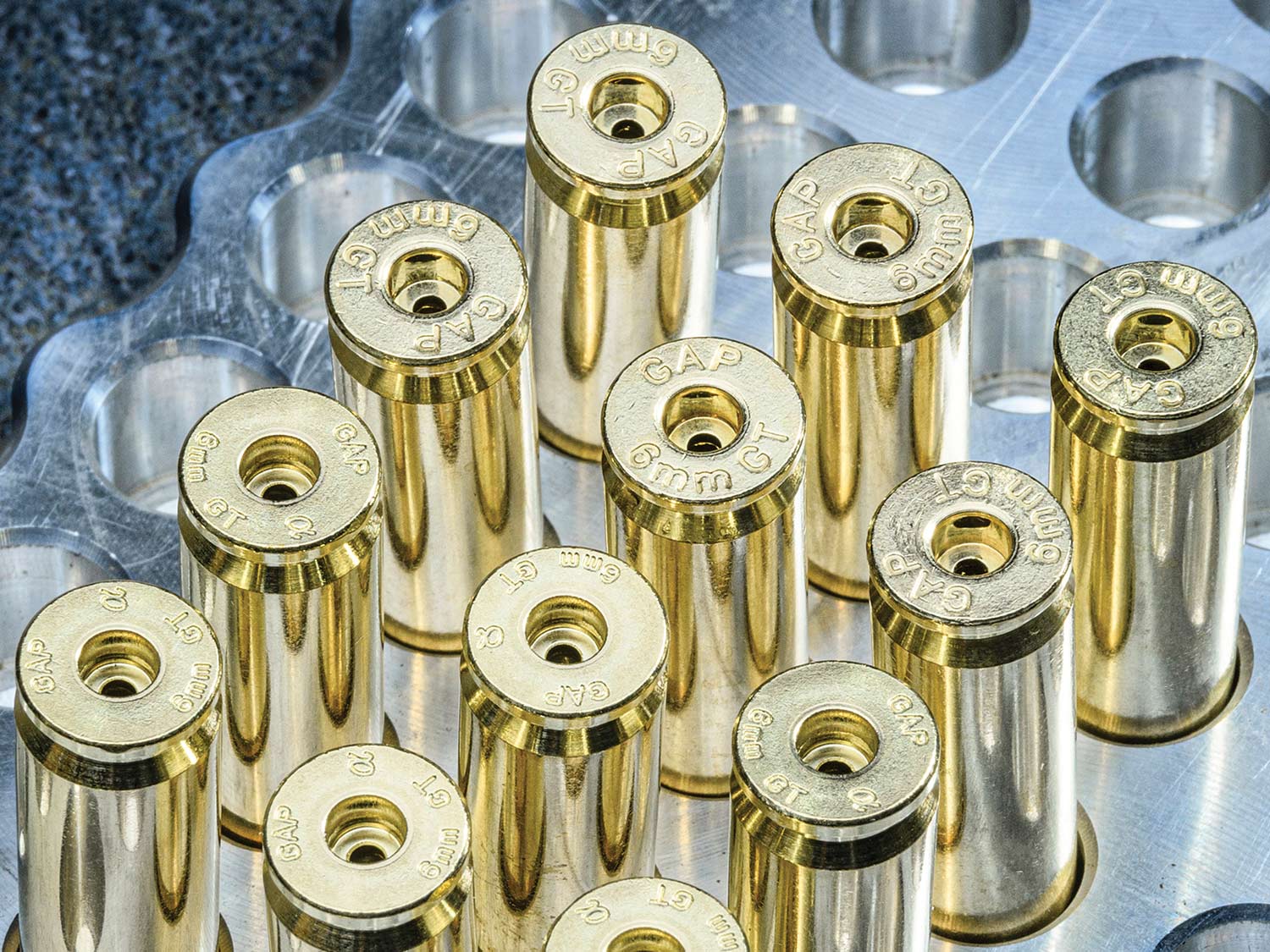
Strong Start
It would seem that the 6 GT has a promising future, but it is trying to shoulder its way to the top in a tough and crowded neighborhood. I give the cartridge high marks in terms of its accuracy, consistency, and flexibility when it comes to loading options.
While it can feed well from unmodified .308-size magazines, some shooters (myself included) have experienced minor glitches with the round that can take a bit of fiddling to fix. (Usually, bending the magazine’s feeding lips a touch does the trick.) Because it is easy to address, I don’t consider it a fatal flaw, but it is annoying.
Other than that, the 6 GT is delivering on its promises. But nothing succeeds like success, so we’ll have to see whether it starts winning in high-level national matches. Should that happen, more shooters will adopt the round, and its future will be secured. I’m willing to go out on a limb and bet that it does.
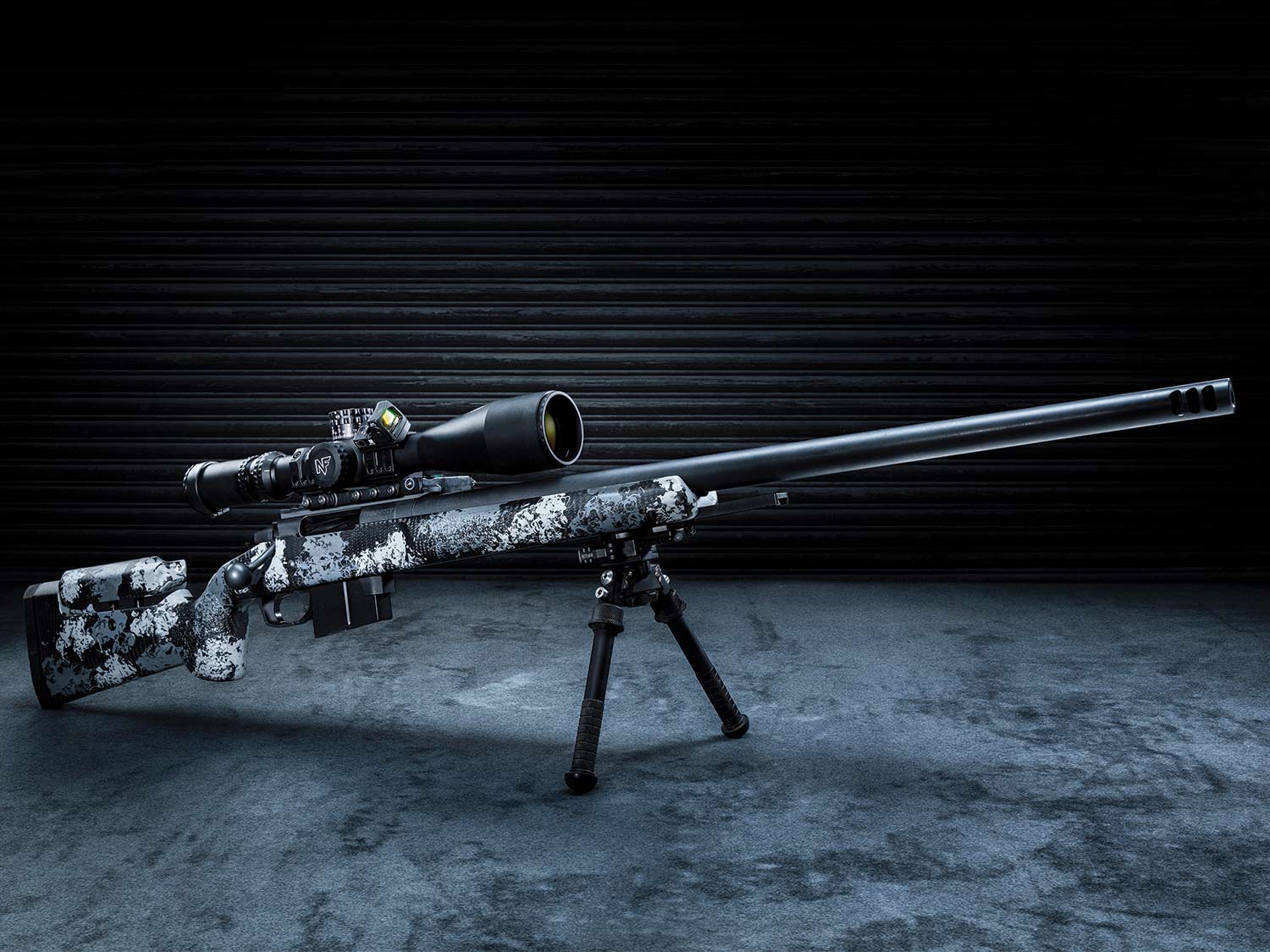
Enter the Tiger
As soon as the 6 GT was unveiled, I knew I wanted to run it in competition, so I put in an order with George Gardner and his crew at GA Precision.
I opted for GA Precision’s three-lug Tempest action, which has a short, smooth bolt throw. It feeds from double-stack AW magazines, which have the advantage of being compact, making them less likely to get hung up on barricades and other obstacles.
The stock is a Manner’s Gap T2A, which has a broad fore-end, comfortable dimensions, an adjustable cheekpiece, and excellent grip geometry that incorporates a useful thumb shelf for the trigger hand. The fore-end was inletted for an Ingenuity Gunworks rail that takes quick-release adapters. The adapters let you position your tripod or bipod anywhere along the rail in a flash.
It’s topped with a Nightforce 7–35×56 ATACR with the excellent Mil-XT reticle. A Spuhr mount secures the scope to the action and has mounting holes for accessories like the Hawk Hill Custom dope card holder and the Trijicon RMR, which I use to help get on distant targets more quickly.
The rifle’s 26-inch Bartlein barrel is a Light Varmint (No. 8) contour, with a 1:7.5 twist. A Triggertech Diamond trigger, set to 1 pound 5 ounces, rounds out the build. —J.B.S.

